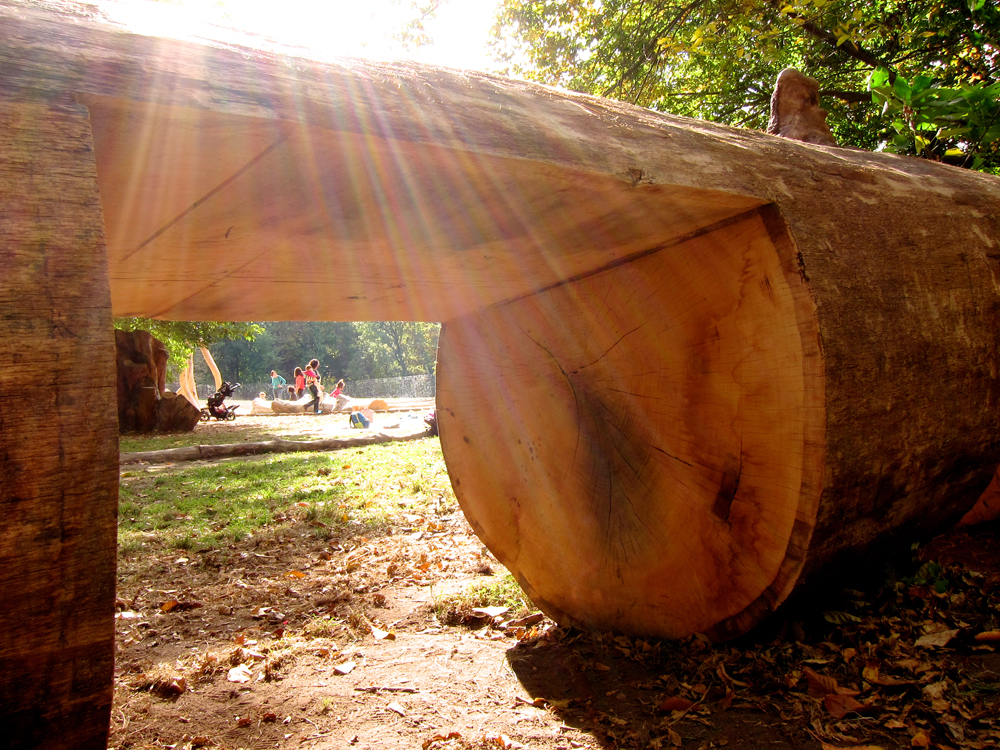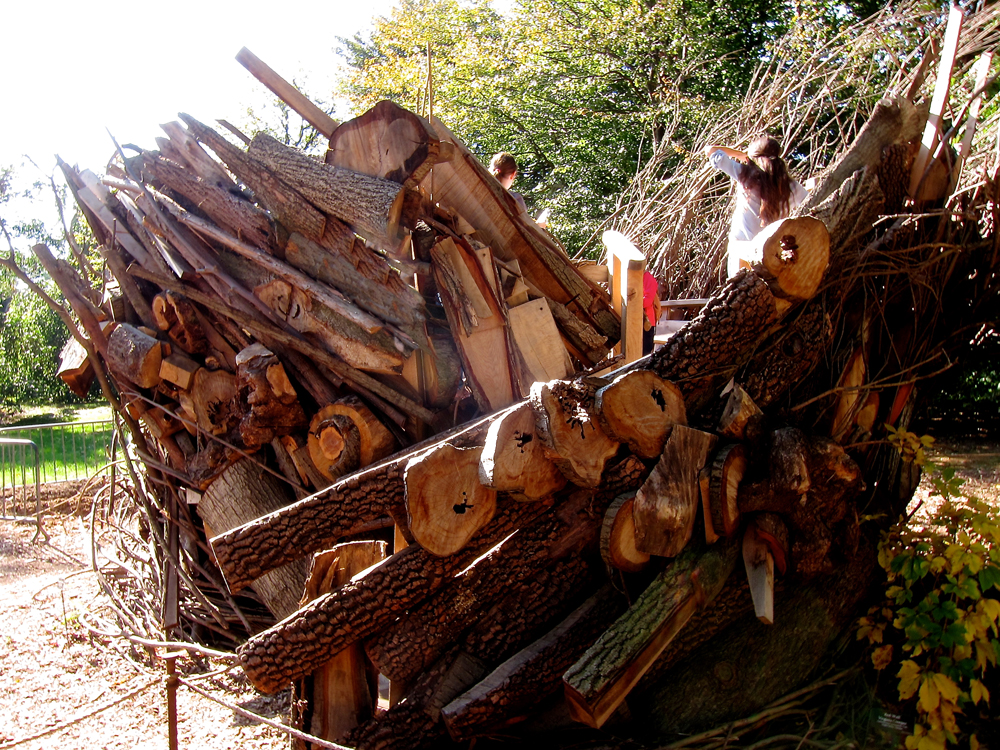How Sandy Storm Damage Became NYC Playground

NEW YORK — Thousands of trees collapsed across New York City during Hurricane Sandy last year, causing tangled messes that have left gaping voids throughout city sidewalks and parks.
Officials still have not finished clearing up all of the trees, in an ongoing cleanup effort that has cost more than $12 million, according to a New York Times report last year.
And what happened to all that wood? Though some of it may have been in good enough condition to be repurposed into building materials, much was shredded into mulch, in an effort to expedite the cleanup process and avoid spreading invasive insects, such as the Asian longhorn beetle.
Still, some select projects have sprouted up across the city in the past year that make use of the storm's wreckage.
From debris to playground
Christian Zimmerman, vice president of design and construction with the Prospect Park Alliance, spearheaded a new playground built from a small portion of the 500 trees that fell in Prospect Park during the storm. [Photos: Sandy's Wreckage Gets New Use]
The playground, called the Zucker Natural Exploration Area, opened earlier this month in the northeast section of the park and provides a whimsical space for kids to sit in thrones carved out of large stumps, climb through tunnels sawed into downed trunks, and ogle at trees that rest upside-down.
Get the world’s most fascinating discoveries delivered straight to your inbox.
"The response has been amazing," Zimmerman told LiveScience. "I go there every day just to check it out and it's usually swarming with kids and parents."
Mandy Davis, a mother of two who lives in a nearby Brooklyn neighborhood, traveled to Prospect Park last week on a crisp afternoon to check out the new addition, letting her 1- and 3-year-olds get dirty as they explored stumps carved into geometric shapes.
"It's a little dangerous, which makes it a lot more fun for the kids," Davis said, comparing the park with more standard plastic jungle gyms. "It's not all padded."
Others were glad to see something positive come from Hurricane Sandy's destruction.
"I think it's great that they have been able to do something good out of something that was so tragic," said Brooklyn resident AnnMarie Anderson, as her 3-year-old son looked at her giggling, completely soaked by a water pump attached to an overturned trunk.
Climb and oversized nest
Several blocks away from Prospect Park at the Brooklyn Botanic Garden, another tree-repurposing effort has taken shape in the form of a nestlike structure that visitors can climb inside.
Manhattan-based treehouse artist Roderick Romero created the installation from heaps of limbs strewn throughout the garden after the storm, and says it is meant to look like a nest that had been blown to the ground. "It's a memorial to Hurricane Sandy, in a way," Romero told LiveScience.
A group of urban sustainability graduate students from Pratt Institute in Brooklyn stopped by the nest last week while perusing the garden, chatting positively about the sculpture.
It may not save lives directly, said student Gina Kosty, but it does inspire conversations that could help community members work together and support each other in future storms. [The Scientist Who Helped Save New York's Subway from Sandy]
"It's important for people to know that they have each other's back," Kosty said.
"It's a good reminder," said student Marcel Negret. "It sends a message: 'Don't forget, this [stuff] happens.'"
Both the nest and the playground will remain in their respective locations indefinitely, though the wood in the Zucker Natural Exploration Area was not pressure-treated, and may degrade over time, Zimmerman said. Pressure treatment involves treating wood with preservatives and then pressurizing the wood in a closed container to force preservatives into all crevices, protecting against degradation by burrowing insects and fungus.
"We weren't sure how successful it would be," Zimmerman said. "But people are very happy to have this type of play area, and they love when they find out that it was made from storm damage."
Inspired by these positive reactions, Zimmerman hopes to create a similar but larger playground elsewhere in the city within the next several years.
Follow Laura Poppick on Twitter. Follow LiveScience on Twitter, Facebook and Google+. Original article on LiveScience.




